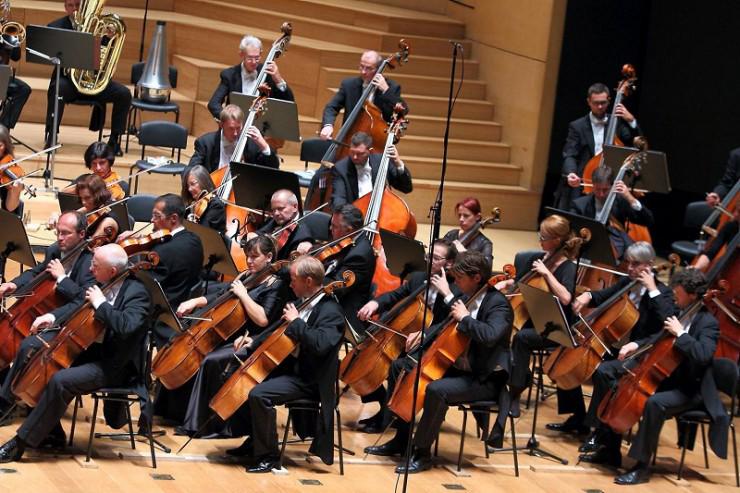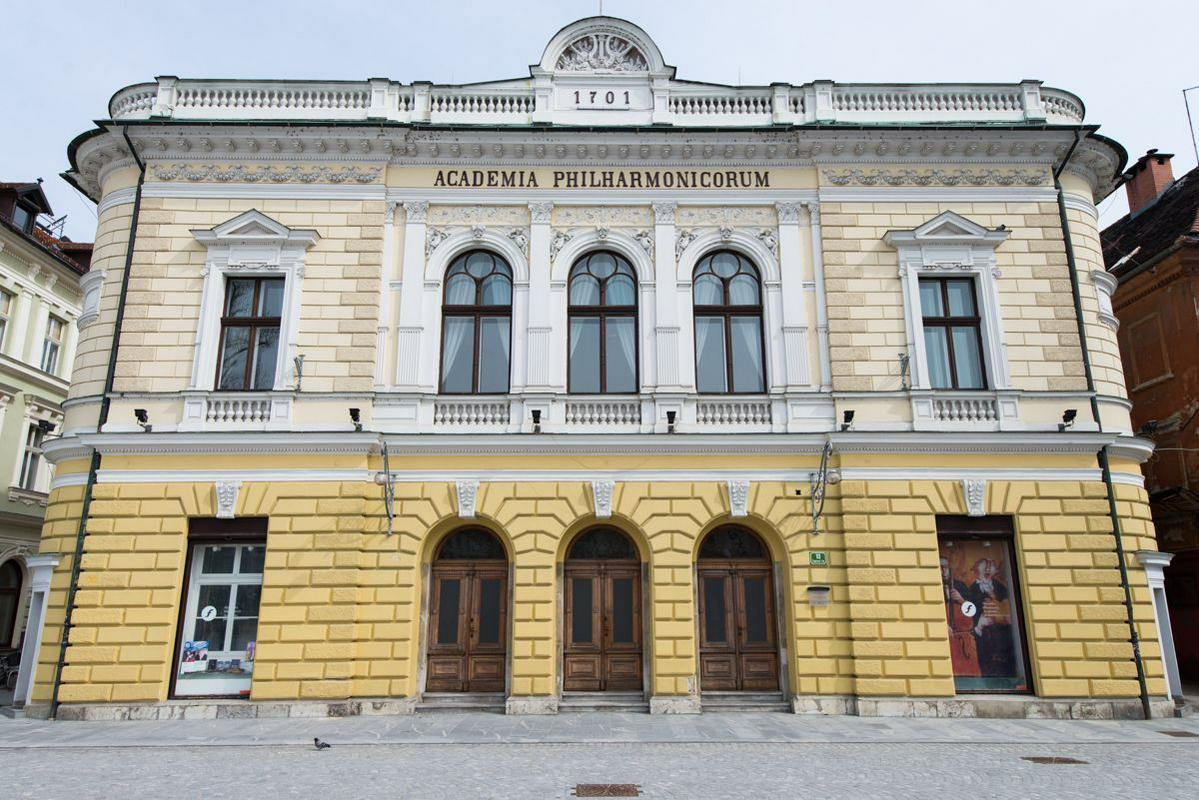

The orchestra Superior musical names are classified among the guests of the Slovenian Philharmonic Orchestra. Among the conductors: Carlos Kleiber, Riccardo Muti, Zubin Mehta, Kurt Sanderling, Leopold Hager, Theodor Guschlbauer, Yuri Simonov, Serge Baudo, Hartmut Haenchen, Heinz Holliger, Matthias Bamert, Kenneth Montgomery, Heinrich Schiff, Matthias Pintscher, Vladimir Fedoseyev, Sir Neville Marriner, Tan Dun. Domestic and foreign soloists: Irena Grafenauer, Marjana Lipovšek, Dubravka Tomšič Srebotnjak, Bernarda Fink, Sabina Cvilak, Janez Lotrič, Yehudi Menuhin, David Oistrakh, Arturo Benedetti Michelangeli, Sviatoslav Richter, Luciano Pavarotti, Gidon Kremer, Anne-Sophie Mutter, Vadim Repin, Arthur Rubinstein, Ivo Pogorelić, Lazar Berman, Elisabeth Leonskaja, Shlomo Mintz, Till Fellner, Fazil Say, Mario Brunello, Håkan Hardenberger, David Garrett, Dmitri Hvorostovsky, Eva Johansson, Ramón Vargas, Christian Tetzlaff, Gautier and Renaud Capuçon, Alisa Weilerstein, Leonidas Kavakos, Tasmin Little, Evelyn Glennie, Paul Meyer, Julian Rachlin, Sarah Chang, Emmanuel Pahud, Mischa Maisky, Bryn Terfel, Anna Netrebko... The Big European Tour was among their greatest successes (11 concerts in renowned concert halls of Ljubljana, Stuttgart, Munich, Amsterdam, Paris, Berlin, Frankfurt, Nuremberg, Prague, Essen and Vienna) with a concert performance of the opera Iolanta by Pyotr Ilyich Tchaikovsky with the famous soprano Anna Netrebko in the title role and an opera recording for Deutsche Grammophon.
This is the country’s main musical institution, and the sign of the year 1701 on the building's façade bears witness to its long tradition. The orchestra has created magnificent musical moments for generations of Slovenian music lovers.
The Slovenian Philharmonic is one of the oldest orchestras in the world. Among the many distinguished artists who became honorary members of the Slovenian Philharmonic and its predecessor, the Philharmonic Society, were Joseph Haydn, Ludwig van Beethoven, Niccolò Paganini, Johannes Brahms, Carlos Kleiber, Uroš Krek, Primož Ramovš and many others. The Slovenian Philharmonic has always worked with illustrious names in music.
Yesterday
More than 300 years have gone by since the first concert in the building (this was back in 1701), which houses the Slovenian Philharmonic Orchestra today. A further artistic boom, both in music and other areas, brought enlightenment and left its strong mark. It was then that the Philharmonic Society was founded, and quickly lured citizens, traders, teachers, priests, and others into its circles. This society, whose statute reads that its purpose is a refinement of emotions with a selection of the best songs and the formation of taste with good performances, spread rapidly and constituted the core of today's institution under the name The Slovenian Philharmonic.
The Philharmonic Society accepted everyone into its membership who it considered would help to advance its aims and objectives. Its honorary members were also foreign music lovers, who were beneficial to society with their brilliant musical talents and merits. Names such as Joseph Haydn, Ludwig van Beethoven, Niccolò Paganini and Johannes Brahms were just some of these.
The significant rise of the Philharmonic Society started with the arrival of a Czech, Anthony Nedvĕd, in 1856. At first Nedvĕd became a choirmaster of the male choir and later director of the society. Important turning points also include the work of the young Gustav Mahler during the season 1881/82. It was not until 1808 that the orchestra was named the Slovenian Philharmonic Orchestra and its leader at that time was Vaclav Tálich, who brought a breath of fresh air through his work and into Slovenian music. During its first season, the Slovenian Philharmonic Orchestra performed 190 times. At the time, in the midst of the formation of Slovenian national identity, the establishment of the Slovenian Philharmonic signified a courageous act of the young Slovenian culture.
The Slovenian Philharmonic we know today was formed in 1948 on the initiative of the composer Marjan Kozina, conductor Samo Hubad and musicologist Vlado Golob, with Kozina becoming the first general manager and artistic director.
Today
Today's Slovenian Philharmonic is a musical institution of world renown. During recent years, the ensemble has collaborated with great and illustrious names from the music world. Its excellence was confirmed on numerous tours throughout Europe, the United States, Japan and at major international festivals.
According to the director of Slovenian Philharmonic, Damjan Damjanovič, who has been the head of the institution for the last decade, “we would do injustice to everyone with whom we have collaborated if we did not highlight or mention them. However, I believe that it is necessary to especially mention those who have brought some changes and freshness to the Slovenian Philharmonic. They are chief conductors George Pehlivanian, Emmanuel Villaume, Keri-Lynn Wilson and of late Uroš Lajovic and Martina Batič. Each contributed to the development of our institution and to collaborations with names such as Ricardo Muti, Anna Netrebko, Tan Dun, Sir Neville Marriner in their own way...” Moreover, the Slovenian Philharmonic Orchestra collaborated with rock bands – the most notable collaboration was the one with the Slovenian group Siddharta – and Sting.
Tomorrow
The Slovenian Philharmonic is entering a new era with big plans and grand concepts. They never run out of ideas in this institution. The repertoire, the orchestra and the Philharmonic building are symbols of the persistent efforts of high musical culture in Slovenia. According to Damjan Damjanovič, their plans continue to focus on functioning in all circumstances in a way that they can continue to create and raise their quality and their own importance in the country. “We want to become a national pride of every citizen, just like the Vienna and Berlin Philharmonic are in their countries.”
Polona Prešeren, SINFO
The orchestra Superior musical names are classified among the guests of the Slovenian Philharmonic Orchestra. Among the conductors: Carlos Kleiber, Riccardo Muti, Zubin Mehta, Kurt Sanderling, Leopold Hager, Theodor Guschlbauer, Yuri Simonov, Serge Baudo, Hartmut Haenchen, Heinz Holliger, Matthias Bamert, Kenneth Montgomery, Heinrich Schiff, Matthias Pintscher, Vladimir Fedoseyev, Sir Neville Marriner, Tan Dun. Domestic and foreign soloists: Irena Grafenauer, Marjana Lipovšek, Dubravka Tomšič Srebotnjak, Bernarda Fink, Sabina Cvilak, Janez Lotrič, Yehudi Menuhin, David Oistrakh, Arturo Benedetti Michelangeli, Sviatoslav Richter, Luciano Pavarotti, Gidon Kremer, Anne-Sophie Mutter, Vadim Repin, Arthur Rubinstein, Ivo Pogorelić, Lazar Berman, Elisabeth Leonskaja, Shlomo Mintz, Till Fellner, Fazil Say, Mario Brunello, Håkan Hardenberger, David Garrett, Dmitri Hvorostovsky, Eva Johansson, Ramón Vargas, Christian Tetzlaff, Gautier and Renaud Capuçon, Alisa Weilerstein, Leonidas Kavakos, Tasmin Little, Evelyn Glennie, Paul Meyer, Julian Rachlin, Sarah Chang, Emmanuel Pahud, Mischa Maisky, Bryn Terfel, Anna Netrebko... The Big European Tour was among their greatest successes (11 concerts in renowned concert halls of Ljubljana, Stuttgart, Munich, Amsterdam, Paris, Berlin, Frankfurt, Nuremberg, Prague, Essen and Vienna) with a concert performance of the opera Iolanta by Pyotr Ilyich Tchaikovsky with the famous soprano Anna Netrebko in the title role and an opera recording for Deutsche Grammophon.

































































